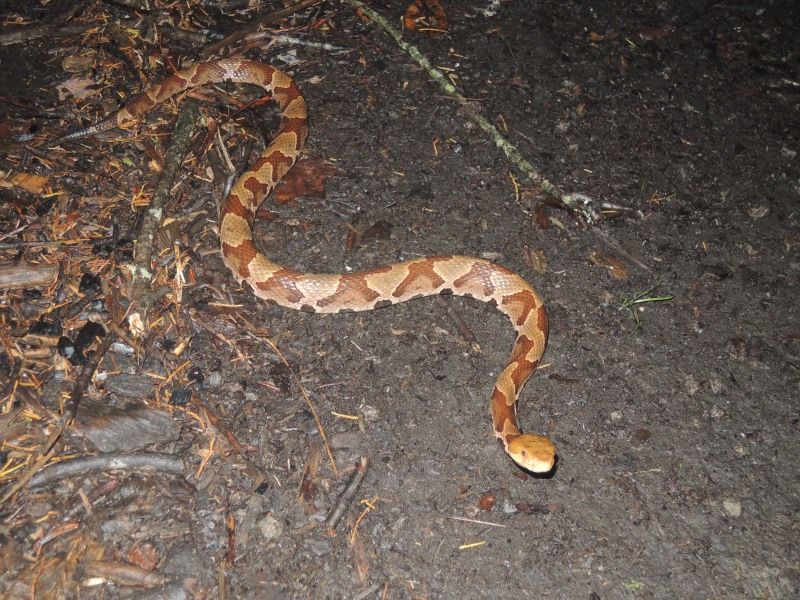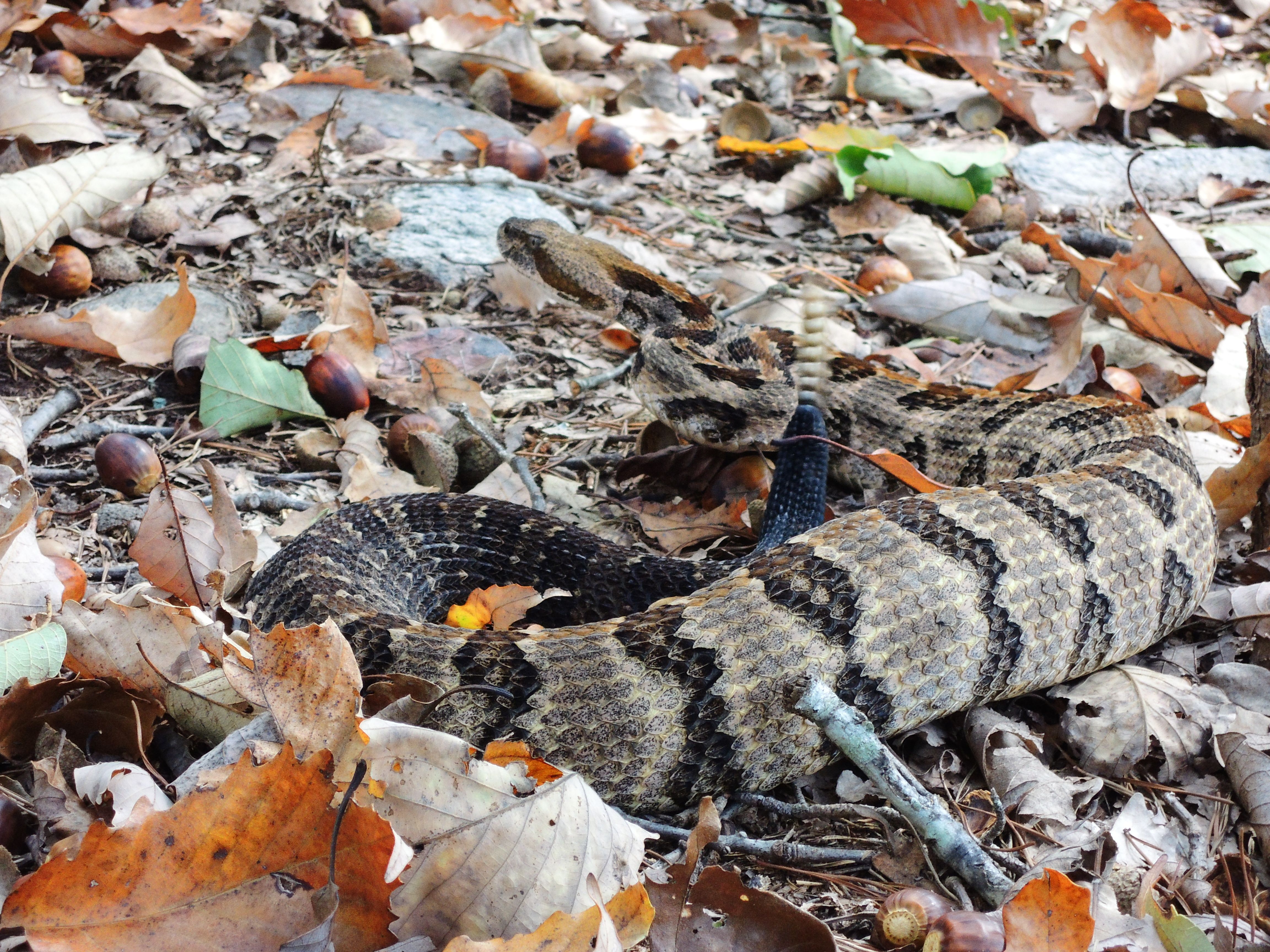Newanderthal
Member
- Messages
- 903
- Points
- 18
the copperhead is probably one of the most commonly misidentified snakes out there... or rather dozens of other snakes are misidentified as copperheads. The result is that every year thousands of nonvenomous snakes are chopped up by shovels or bludgeoned by sticks because someone thought the snake was deadly. Though the copperhead bite is rarely lethal (only 3 confirmed deaths in the last 120 years) they account for more bites than any other venomous snake in the country (about 4,000 annually, roughly half of all venomous snakebites). The necrotic venom causes tissue damage and significant pain. The medical bills associated with a venomous bite can range from $6,000 - $60,000.
So how do you identify a copperhead?
Here, I'll show you.
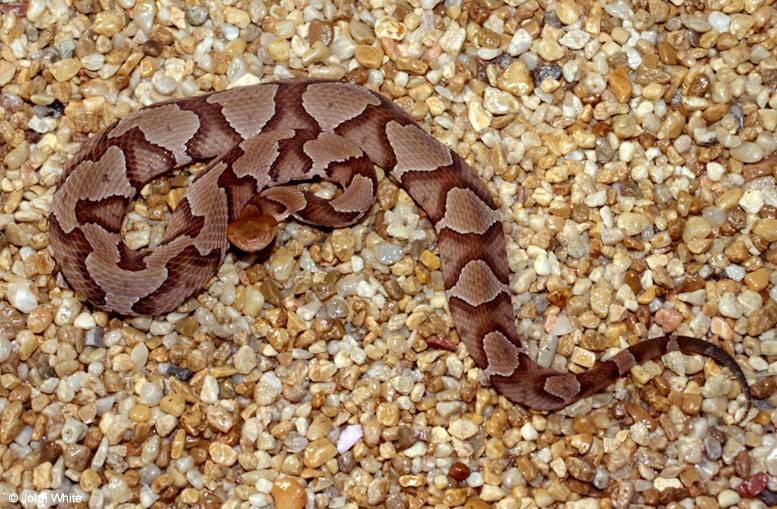
First, note the overall shape of the snake. Notice the thick, stout body. All pit vipers (vipers that use heat-sensing pits to hunt) in the United States are stout-bodied snakes. Looking at the copperhead, you can see how the snake is thick.
Second, look at the coloration and pattern. Copperheads are typically brown or orange in color, the shade of dead leaves. This coloration and pattern helps them to blend in with the forest floor. The pattern is comprised of wide, irregular bands that that are darker than the background color of the snake.

Looking at the head you'll notice that it is heart-shaped, this too is the rule among pit vipers.

Also, you'll notice the two-tone head. The top of the head is darker than the bottom, a diagonal division that runs behind the eye.
Lastly, the snake has a slit pupil. Why is this detail last? Two reasons. First, you shouldn't be getting close enough to a copperhead to look at his pupils. You should be giving him all the room he needs and stepping away. Second, the slit pupil is only to confirm that it's a copperhead, not to be used as the only identification of a venomous snake. Some venomous snakes have round pupils and some non-venomous snakes have slit pupils. The pupil shape indicates when the snake is most active, slit for night, round for day, not the presence of fangs and venom glands.
Now that you know the basic details of a copperhead, I'll show you the most common variations on pattern and color.

The color is usually dead-leaf brown or orang, but sometimes a specimen shows more gray or darker brown. Apart from this, the details are still enough to easily identify the snake as a copperhead.

Lastly, some have wider, more regular bands. There are about 5 subspecies of copperhead and the pattern and coloration vary slightly between them, but looking at them should tell you that they're all relatives.
Now that the copperhead identification is clear, here are a few snakes that are commonly mistaken for copperheads.
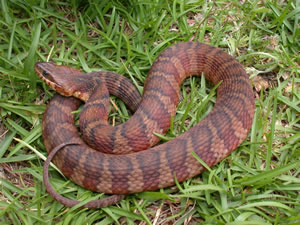
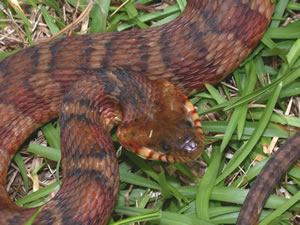
Here's a water snake. Completely harmless, but it looks similar to the snakes above. How do you tell the difference?
It looks similar, stout body, dead leaf color, bands. Even has a sort of heart-shaped head. But the details are still off. The head is only shaped like that when the snake flattens it out to mimic a viper. The bands have a dark border on the edges that the copperhead doesn't have. And the lower half of the face has vertical lines that are missing from the copperhead. Also, the pupils are round on the water snake.


Here you have a corn snake. Also completely harmless (and the most common pet snake in the country). The colors are right, but again there's that border. Also, the head is coffin-shaped, the pupils are round, and the head is covered in intricate markings. The body is slender, not stout.
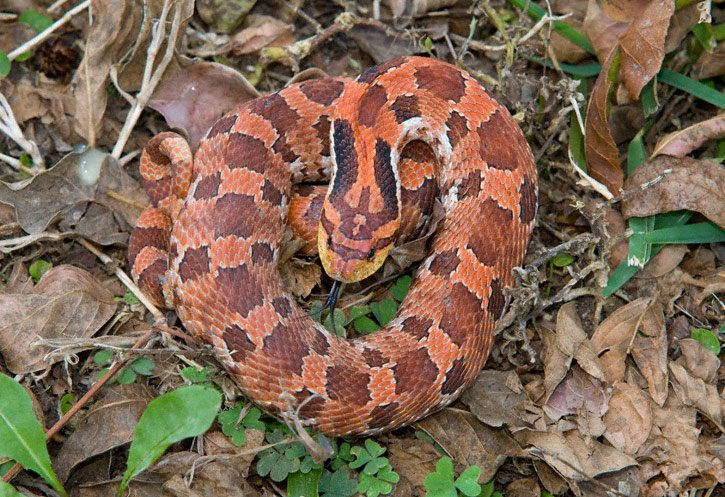
And here's a hognose snake. Again this is one that will flatten its head to look menacing. It will also puff out a hood, make a loud hissing noise, open its mouth and even act as if it will strike you. This species actually is harmless and will not even bite. If you grab it, it will actually flip over and play dead.
Looking at it, the body is stout and the colors might be right, but it has a square pattern instead of continuous bands, the nose is turned up, the head has distinct patterns that a copperhead does not, and the pupils are round.

I hope this helps. There's no one way to tell if a snake is venomous or not. The only true way is to learn the venomous snakes in your area and learn the details that are used to identify that snake. All that means is that you'll need to learn about 3-6 snakes and what they look like. The rest are harmless.
And if you don't know, leave the snake alone. Over 80% of venomous snakebites (6,500 annually) occur when the person is trying to kill the snake. Once you spot it, inform those in your party so you can all give the animal plenty of room.
So how do you identify a copperhead?
Here, I'll show you.

First, note the overall shape of the snake. Notice the thick, stout body. All pit vipers (vipers that use heat-sensing pits to hunt) in the United States are stout-bodied snakes. Looking at the copperhead, you can see how the snake is thick.
Second, look at the coloration and pattern. Copperheads are typically brown or orange in color, the shade of dead leaves. This coloration and pattern helps them to blend in with the forest floor. The pattern is comprised of wide, irregular bands that that are darker than the background color of the snake.

Looking at the head you'll notice that it is heart-shaped, this too is the rule among pit vipers.

Also, you'll notice the two-tone head. The top of the head is darker than the bottom, a diagonal division that runs behind the eye.
Lastly, the snake has a slit pupil. Why is this detail last? Two reasons. First, you shouldn't be getting close enough to a copperhead to look at his pupils. You should be giving him all the room he needs and stepping away. Second, the slit pupil is only to confirm that it's a copperhead, not to be used as the only identification of a venomous snake. Some venomous snakes have round pupils and some non-venomous snakes have slit pupils. The pupil shape indicates when the snake is most active, slit for night, round for day, not the presence of fangs and venom glands.
Now that you know the basic details of a copperhead, I'll show you the most common variations on pattern and color.

The color is usually dead-leaf brown or orang, but sometimes a specimen shows more gray or darker brown. Apart from this, the details are still enough to easily identify the snake as a copperhead.

Lastly, some have wider, more regular bands. There are about 5 subspecies of copperhead and the pattern and coloration vary slightly between them, but looking at them should tell you that they're all relatives.
Now that the copperhead identification is clear, here are a few snakes that are commonly mistaken for copperheads.


Here's a water snake. Completely harmless, but it looks similar to the snakes above. How do you tell the difference?
It looks similar, stout body, dead leaf color, bands. Even has a sort of heart-shaped head. But the details are still off. The head is only shaped like that when the snake flattens it out to mimic a viper. The bands have a dark border on the edges that the copperhead doesn't have. And the lower half of the face has vertical lines that are missing from the copperhead. Also, the pupils are round on the water snake.


Here you have a corn snake. Also completely harmless (and the most common pet snake in the country). The colors are right, but again there's that border. Also, the head is coffin-shaped, the pupils are round, and the head is covered in intricate markings. The body is slender, not stout.

And here's a hognose snake. Again this is one that will flatten its head to look menacing. It will also puff out a hood, make a loud hissing noise, open its mouth and even act as if it will strike you. This species actually is harmless and will not even bite. If you grab it, it will actually flip over and play dead.
Looking at it, the body is stout and the colors might be right, but it has a square pattern instead of continuous bands, the nose is turned up, the head has distinct patterns that a copperhead does not, and the pupils are round.

I hope this helps. There's no one way to tell if a snake is venomous or not. The only true way is to learn the venomous snakes in your area and learn the details that are used to identify that snake. All that means is that you'll need to learn about 3-6 snakes and what they look like. The rest are harmless.
And if you don't know, leave the snake alone. Over 80% of venomous snakebites (6,500 annually) occur when the person is trying to kill the snake. Once you spot it, inform those in your party so you can all give the animal plenty of room.



